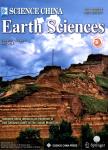Serpulids and their paleoecology of the Paleogene Kalatar Formation in southwest Tarim Basin of China
Serpulids and their paleoecology of the Paleogene Kalatar Formation in southwest Tarim Basin of China作者机构:Key Laboratory of Marginal Sea Geology of CASSouth China Sea Institute of OceanologyChinese Academy of SciencesGuangzhou 510301China Exploration and Development Research InstituteTarim Oilfield CompanyPetroleum Company LimitedKorla 841000China
出 版 物:《Science China Earth Sciences》 (中国科学(地球科学英文版))
年 卷 期:2012年第55卷第11期
页 面:1087-1100页
核心收录:
学科分类:070904[理学-构造地质学] 070903[理学-古生物学与地层学(含:古人类学)] 0709[理学-地质学] 07[理学]
基 金:supported by National Natural Science Foundation of China(Grant Nos. 40872078,40976030) Knowledge Innovation Program of South China Sea Institute of Oceanology (Grant No. LYQY200806) the Research Project of Tarim Oilfield Company (Grant No. 41009080051)
主 题:serpulids palaeoecology Kalatar Formation Paleogene southwest Tarim Basin
摘 要:Polychaete serpulids are globally distributed tubeworms mostly in marine environments from Late Triassic to modem time. These calcareous tubeworms could be rock-forming, reef-building, or a principal fouling organism in harbor and bays. Car- bonates of the Paleogene Kalatar Formation in southwest Tarim Basin yield abundant serpulid fossils, which, together with oyster fossils, constitute the characteristic fossil assemblage of the Kalatar Formation. Other common fossils include bivalves, gastropods, ostracods, echinoderms, and bryozoans. Lithologies that yielded serpulid fossils are characterized by micritic bio- clastic limestone, sandy limestone, and shelly limestone, indicating a semi-restricted to open shallow marine environment with medium to low water energy. The research data about serpulids and their fossil materials from China are relatively rare. Based on the studies of tbssils taxonomy, community palaeoecology, and fossil taphonomy, this paper analyzed and studied the types, occurrence, distribution, and morphological characteristics of serpulids and their palaeoecological features in the Kalatar For- mation. Two serpulid community compositions were recognized in the Kalatar Formation, including a rock-forming Ditrupa community and a cluster-growth Propomatoceros community. The Ditrupa community was distributed in coastal environment of the west Kunlun piedmont, lived on sandy hard substrates with little mud, and rarely occurred in lagoon and tidal settings. The Propomatoceros community occurred in offshore middle carbonate ramp in the piedmont of the south Tianshan Moun- tains and in offshore shelf in the piedmont of the west Kunlun Mountains. According to the analysis on the host-rock litholo- gies, preservation and symbionts, it is inferred that serpulids in the Kalatar Formation grew on the oyster shell or other hard substrate, and they did not form reefs or bioherms.



